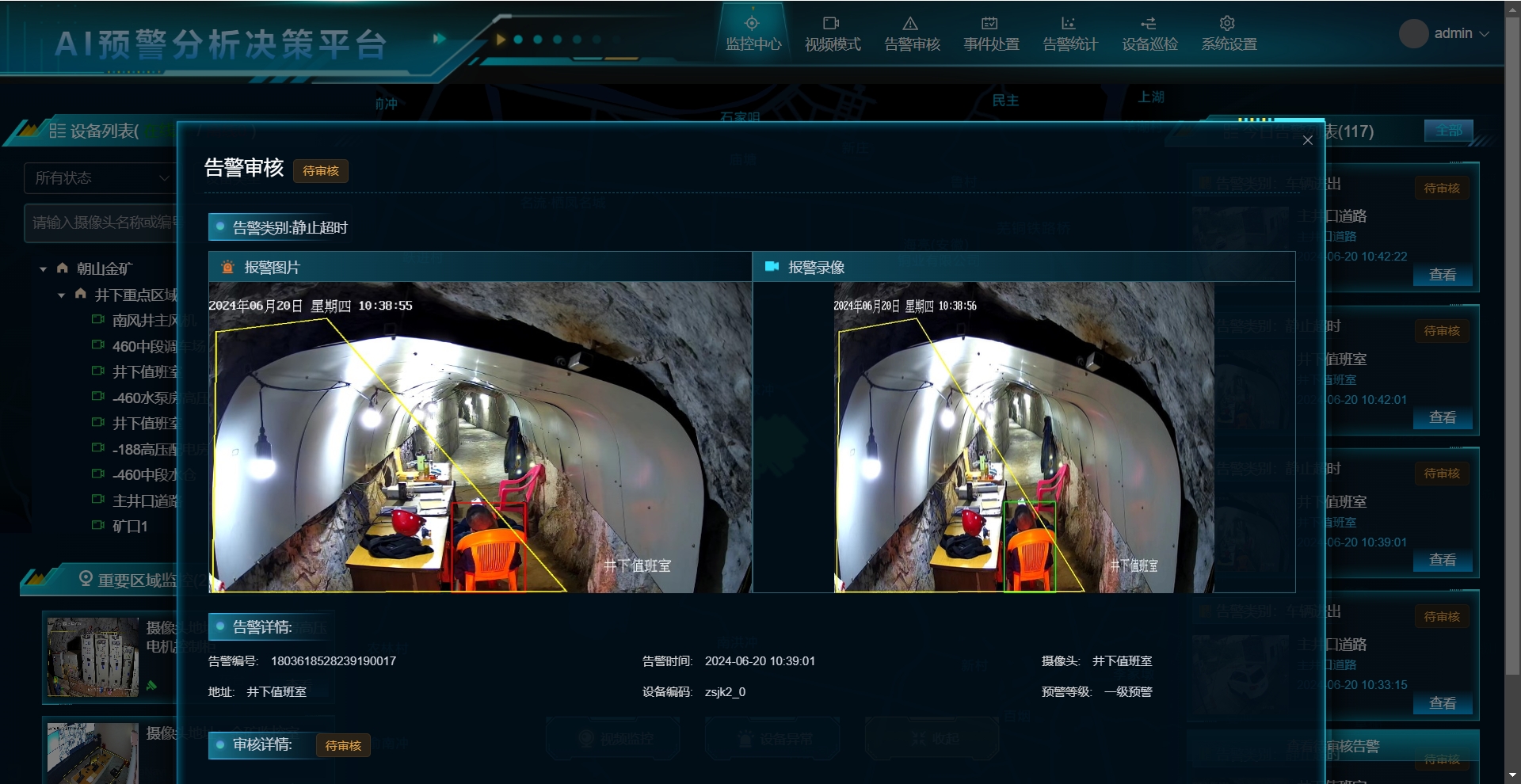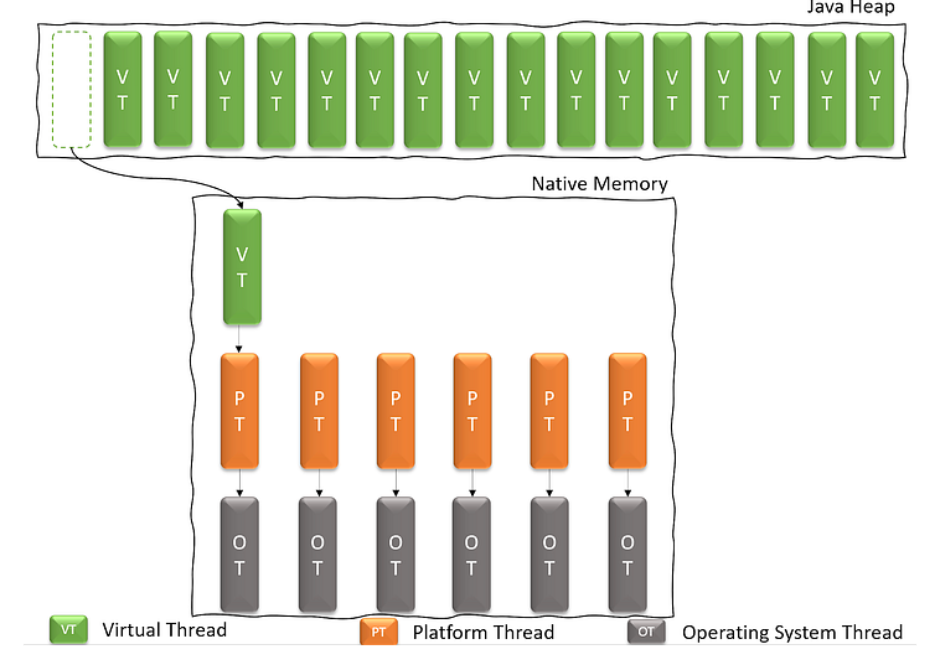簡介
JDK 8 中 CompletableFuture 沒有超時中斷任務的能力。現有做法強依賴任務自身的超時實現。本文提出一種異步超時實現方案,解決上述問題。
前言
JDK 8 是一次重大的版本升級,新增了非常多的特性,其中之一便是 CompletableFuture。自此從 JDK 層面真正意義上的支持了基于事件的異步編程范式,彌補了 Future 的缺陷。
在我們的日常優化中,最常用手段便是多線程并行執行。這時候就會涉及到 CompletableFuture 的使用。
常見使用方式
下面舉例一個常見場景。
假如我們有兩個 RPC 遠程調用服務,我們需要獲取兩個 RPC 的結果后,再進行后續邏輯處理。
public static void main(String[] args) { // 任務 A,耗時 2 秒 int resultA = compute(1); // 任務 B,耗時 2 秒 int resultB = compute(2); // 后續業務邏輯處理 System.out.println(resultA + resultB); }
可以預估到,串行執行最少耗時 4 秒,并且 B 任務并不依賴 A 任務結果。
對于這種場景,我們通常會選擇并行的方式優化,Demo 代碼如下:
public static void main(String[] args) { // 僅簡單舉例,在生產代碼中可別這么寫! // 統計耗時的函數 time(() -> { CompletableFuture result = Stream.of(1, 2) // 創建異步任務 .map(x -> CompletableFuture.supplyAsync(() -> compute(x), executor)) // 聚合 .reduce(CompletableFuture.completedFuture(0), (x, y) -> x.thenCombineAsync(y, Integer::sum, executor)); // 等待結果 try { System.out.println("結果:" + result.get()); } catch (ExecutionException | InterruptedException e) { System.err.println("任務執行異常"); } }); } 輸出: [async-1]: 任務執行開始:1 [async-2]: 任務執行開始:2 [async-1]: 任務執行完成:1 [async-2]: 任務執行完成:2 結果:3 耗時:2 秒
可以看到耗時變成了 2 秒。
存在的問題
分析
看上去 CompletableFuture 現有功能可以滿足我們訴求。但當我們引入一些現實常見情況時,一些潛在的不足便暴露出來了。
compute(x) 如果是一個根據入參查詢用戶某類型優惠券列表的任務,我們需要查詢兩種優惠券并組合在一起返回給上游。假如上游要求我們 2 秒內處理完畢并返回結果,但 compute(x) 耗時卻在 0.5 秒 ~ 無窮大波動。這時候我們就需要把耗時過長的 compute(x) 任務結果放棄,僅處理在指定時間內完成的任務,盡可能保證服務可用。
那么以上代碼的耗時由耗時最長的服務決定,無法滿足現有訴求。通常我們會使用 get(long timeout, TimeUnit unit) 來指定獲取結果的超時時間,并且我們會給 compute(x) 設置一個超時時間,達到后自動拋異常來中斷任務。
public static void main(String[] args) {
// 僅簡單舉例,在生產代碼中可別這么寫!
// 統計耗時的函數
time(() -> {
List> result = Stream.of(1, 2)
// 創建異步任務,compute(x) 超時拋出異常
.map(x -> CompletableFuture.supplyAsync(() -> compute(x), executor))
.toList();
// 等待結果
int res = 0;
for (CompletableFuture future : result) {
try {
res += future.get(2, SECONDS);
} catch (ExecutionException | InterruptedException | TimeoutException e) {
System.err.println("任務執行異常或超時");
}
}
System.out.println("結果:" + res);
});
}
輸出:
[async-2]: 任務執行開始:2
[async-1]: 任務執行開始:1
[async-1]: 任務執行完成:1
任務執行異常或超時
結果:1
耗時:2 秒
可以看到,只要我們能夠給 compute(x) 設置一個超時時間將任務中斷,結合 get、getNow 等獲取結果的方式,就可以很好地管理整體耗時。
那么問題也就轉變成了,如何給任務設置異步超時時間呢?
現有做法
當異步任務是一個 RPC 請求時,我們可以設置一個 JSF 超時,以達到異步超時效果。
當請求是一個 R2M 請求時,我們也可以控制 R2M 連接的最大超時時間來達到效果。
這么看好像我們都是在依賴三方中間件的能力來管理任務超時時間?那么就存在一個問題,中間件超時控制能力有限,如果異步任務是中間件 IO 操作 + 本地計算操作怎么辦?
用 JSF 超時舉一個具體的例子,反編譯 JSF 的獲取結果代碼如下:
public V get(long timeout, TimeUnit unit) throws InterruptedException {
// 配置的超時時間
timeout = unit.toMillis(timeout);
// 剩余等待時間
long remaintime = timeout - (this.sentTime - this.genTime);
if (remaintime <= 0L) {
if (this.isDone()) {
// 反序列化獲取結果
return this.getNow();
}
} else if (this.await(remaintime, TimeUnit.MILLISECONDS)) {
// 等待時間內任務完成,反序列化獲取結果
return this.getNow();
}
this.setDoneTime();
// 超時拋出異常
throw this.clientTimeoutException(false);
}
當這個任務剛好卡在超時邊緣完成時,這個任務的耗時時間就變成了超時時間 + 獲取結果時間。而獲取結果(反序列化)作為純本地計算操作,耗時長短受 CPU 影響較大。
某些 CPU 使用率高的情況下,就會出現異步任務沒能觸發拋出異常中斷,導致我們無法準確控制超時時間。對上游來說,本次請求全部失敗。
解決方式
JDK 9
這類問題非常常見,如大促場景,服務器 CPU 瞬間升高就會出現以上問題。
那么如何解決呢?其實 JDK 的開發大佬們早有研究。在 JDK 9,CompletableFuture 正式提供了 orTimeout、completeTimeout 方法,來準確實現異步超時控制。
public CompletableFuture orTimeout(long timeout, TimeUnit unit) {
if (unit == null)
throw new NullPointerException();
if (result == null)
whenComplete(new Canceller(Delayer.delay(new Timeout(this), timeout, unit)));
return this;
}
JDK 9 orTimeout 其實現原理是通過一個定時任務,在給定時間之后拋出異常。如果任務在指定時間內完成,則取消拋異常的操作。
以上代碼我們按執行順序來看下:
首先執行 new Timeout(this)。
static final class Timeout implements Runnable {
final CompletableFuture f;
Timeout(CompletableFuture f) { this.f = f; }
public void run() {
if (f != null && !f.isDone())
// 拋出超時異常
f.completeExceptionally(new TimeoutException());
}
}
通過源碼可以看到,Timeout 是一個實現 Runnable 的類,run() 方法負責給傳入的異步任務通過 completeExceptionally CAS 賦值異常,將任務標記為異常完成。
那么誰來觸發這個 run() 方法呢?我們看下 Delayer 的實現。
static final class Delayer {
static ScheduledFuture delay(Runnable command, long delay,
TimeUnit unit) {
// 到時間觸發 command 任務
return delayer.schedule(command, delay, unit);
}
static final class DaemonThreadFactory implements ThreadFactory {
public Thread newThread(Runnable r) {
Thread t = new Thread(r);
t.setDaemon(true);
t.setName("CompletableFutureDelayScheduler");
return t;
}
}
static final ScheduledThreadPoolExecutor delayer;
static {
(delayer = new ScheduledThreadPoolExecutor(
1, new DaemonThreadFactory())).
setRemoveOnCancelPolicy(true);
}
}
Delayer 其實就是一個單例定時調度器,Delayer.delay(new Timeout(this), timeout, unit) 通過 ScheduledThreadPoolExecutor 實現指定時間后觸發 Timeout 的 run() 方法。
到這里就已經實現了超時拋出異常的操作。但當任務完成時,就沒必要觸發 Timeout 了。因此我們還需要實現一個取消邏輯。
static final class Canceller implements BiConsumer {
final Future f;
Canceller(Future f) { this.f = f; }
public void accept(Object ignore, Throwable ex) {
if (ex == null && f != null && !f.isDone())
// 3 未觸發拋異常任務則取消
f.cancel(false);
}
}
當任務執行完成,或者任務執行異常時,我們也就沒必要拋出超時異常了。因此我們可以把 delayer.schedule(command, delay, unit) 返回的定時超時任務取消,不再觸發 Timeout。 當我們的異步任務完成,并且定時超時任務未完成的時候,就是我們取消的時機。因此我們可以通過 whenComplete(BiConsumer action) 來完成。
Canceller 就是一個 BiConsumer 的實現。其持有了 delayer.schedule(command, delay, unit) 返回的定時超時任務,accept(Object ignore, Throwable ex) 實現了定時超時任務未完成后,執行 cancel(boolean mayInterruptIfRunning) 取消任務的操作。
JDK 8
如果我們使用的是 JDK 9 或以上,我們可以直接用 JDK 的實現來完成異步超時操作。那么 JDK 8 怎么辦呢?
其實我們也可以根據上述邏輯簡單實現一個工具類來輔助。
以下是我們營銷自己的工具類以及用法,貼出來給大家作為參考,大家也可以自己寫的更優雅一些~
調用方式:
CompletableFutureExpandUtils.orTimeout(異步任務, 超時時間, 時間單位);
工具類源碼:
package com.jd.jr.market.reduction.util; import com.jdpay.market.common.exception.UncheckedException; import java.util.concurrent.*; import java.util.function.BiConsumer; /** * CompletableFuture 擴展工具 * * @author zhangtianci7 */ public class CompletableFutureExpandUtils { /** * 如果在給定超時之前未完成,則異常完成此 CompletableFuture 并拋出 {@link TimeoutException} 。 * * @param timeout 在出現 TimeoutException 異常完成之前等待多長時間,以 {@code unit} 為單位 * @param unit 一個 {@link TimeUnit},結合 {@code timeout} 參數,表示給定粒度單位的持續時間 * @return 入參的 CompletableFuture */ public static CompletableFuture orTimeout(CompletableFuture future, long timeout, TimeUnit unit) { if (null == unit) { throw new UncheckedException("時間的給定粒度不能為空"); } if (null == future) { throw new UncheckedException("異步任務不能為空"); } if (future.isDone()) { return future; } return future.whenComplete(new Canceller(Delayer.delay(new Timeout(future), timeout, unit))); } /** * 超時時異常完成的操作 */ static final class Timeout implements Runnable { final CompletableFuture future; Timeout(CompletableFuture future) { this.future = future; } public void run() { if (null != future && !future.isDone()) { future.completeExceptionally(new TimeoutException()); } } } /** * 取消不需要的超時的操作 */ static final class Canceller implements BiConsumer { final Future future; Canceller(Future future) { this.future = future; } public void accept(Object ignore, Throwable ex) { if (null == ex && null != future && !future.isDone()) { future.cancel(false); } } } /** * 單例延遲調度器,僅用于啟動和取消任務,一個線程就足夠 */ static final class Delayer { static ScheduledFuture delay(Runnable command, long delay, TimeUnit unit) { return delayer.schedule(command, delay, unit); } static final class DaemonThreadFactory implements ThreadFactory { public Thread newThread(Runnable r) { Thread t = new Thread(r); t.setDaemon(true); t.setName("CompletableFutureExpandUtilsDelayScheduler"); return t; } } static final ScheduledThreadPoolExecutor delayer; static { delayer = new ScheduledThreadPoolExecutor(1, new DaemonThreadFactory()); delayer.setRemoveOnCancelPolicy(true); } } }
總結
在 JDK 8 場景下,現有超時中斷的做法依賴于任務本身的超時實現,當任務本身的超時失效,或者不夠精確時,并沒有很好的手段來中斷任務。因此本文給出一種讓 CompletableFuture 支持異步超時的實現方案實現思路,僅供大家參考。
JEP 266: JDK 9 并發包更新提案
審核編輯 黃宇
-
JAVA
+關注
關注
19文章
2957瀏覽量
104544 -
RPC
+關注
關注
0文章
111瀏覽量
11511 -
異步
+關注
關注
0文章
62瀏覽量
18034
發布評論請先 登錄
相關推薦
socket 連接超時處理技巧
socket連接超時如何處理
記一次JSF異步調用引起的接口可用率降低

華納云:java web和java有什么區別java web和java有什么區別

中偉視界:智能監控和預警,靜止超時AI算法如何提升非煤礦山安全?

探索虛擬線程:原理與實現





 Java CompletableFuture 異步超時實現探索
Java CompletableFuture 異步超時實現探索










評論